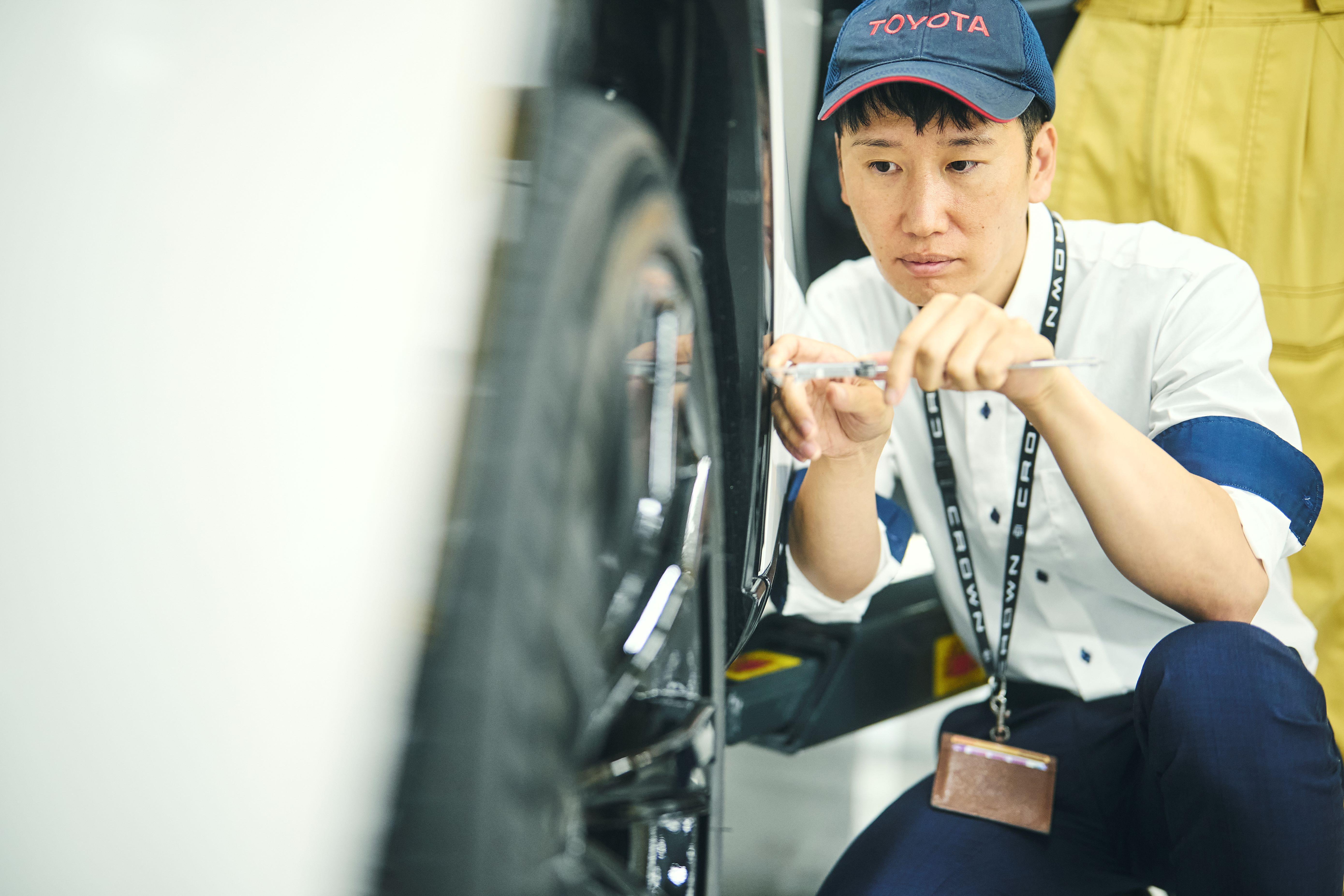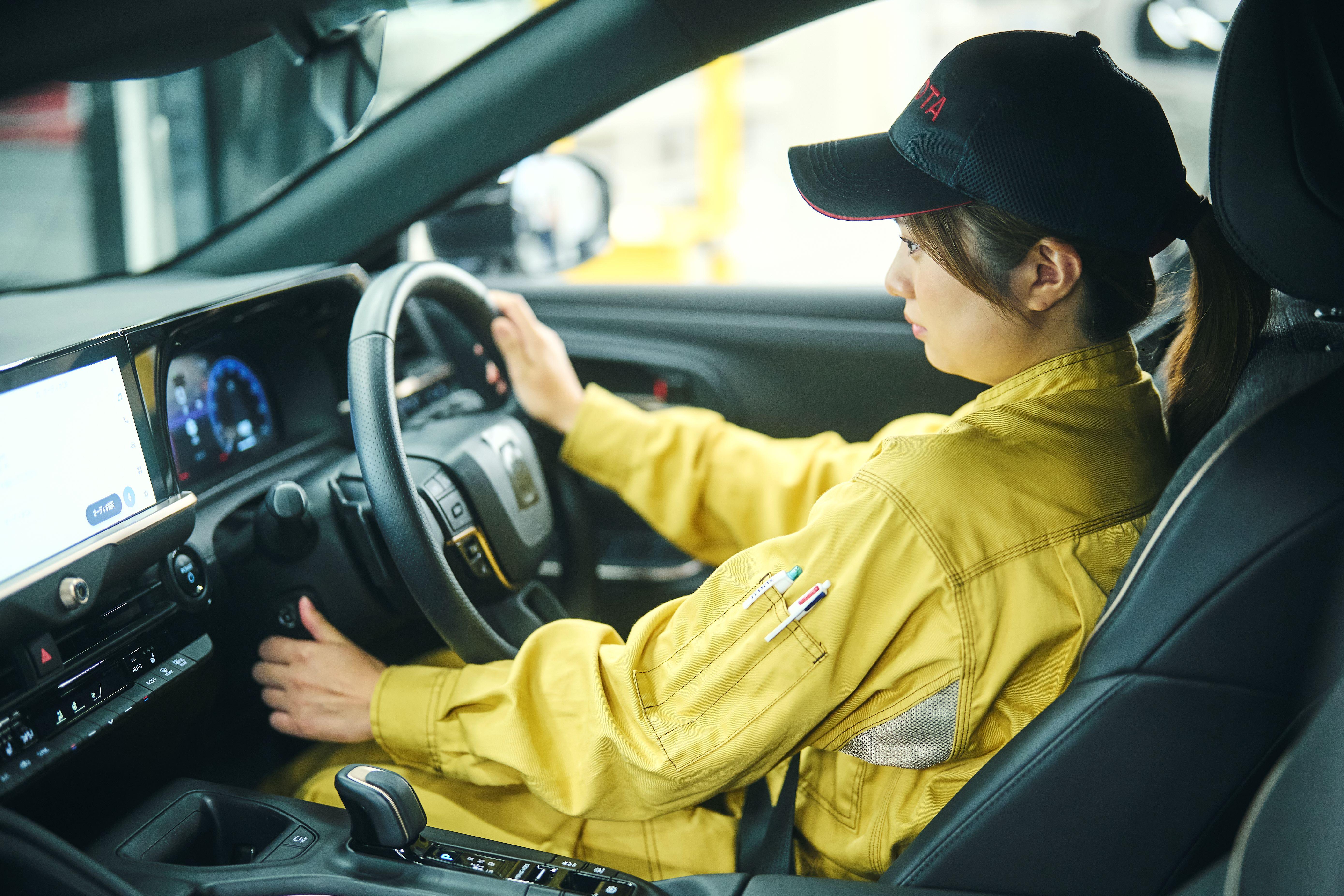
The Crown Sport recently arrived as a new form of sport SUV. What changes in the carmaking genba enabled the development team to attempt something different?
Genchi genbutsu at Toyota Technical Center Shimoyama
Having found their direction for the Crown Sport’s unique on-road feel, the project team forged ahead with developing a high-quality yet thrilling driving experience that gives users the feeling of instinctive control.
Matsumiya says that turning this driving ideal into reality within the tight 21-month development timeframe required changes in the carmaking process. The conventional approach proceeds as steps in sequence—for example, the specs for mechanical elements such as the suspension and shock absorbers are determined before moving on to the electronic control systems.
For the new Crown, however, the development of these mechanical and control elements was integrated, with design and testing staff working together as one team.

Matsumiya
We realized that the conventional approach makes it difficult to optimize overall driving, turning, and stopping performance.
The Crown Crossover and Sport are equipped with DRS, an electronic rear-wheel steering system. We had our test drivers involved in tuning the DRS, developing mechanical elements such as the suspension and shock absorbers in tandem with the electronics.

Ito
Including control systems in the test runs expanded the scope of our tuning, which felt groundbreaking as a driver.
At the same time, creating natural controls that feel intuitive for customers also proved to be the hardest part.
Tuning solely through electronic controls may give you a comfortable ride and good handling on paper, but it never results in natural movements.
That’s where mechanical tuning works well. Having handled both types of tuning myself, I felt that combining the mechanical and control aspects was crucial.

Yamazaki
We tuned the DRS by gradually adjusting the degree of control through repeated testing, not only at Technical Center Shimoyama but also driving the snowy roads and circuits of the Shibetsu Proving Ground.
The final result is a car that anyone can enjoy driving safely in any location.
Matsumiya notes that this joint approach to development, spanning across department lines, is further evidence of changes in the carmaking genba.
Matsumiya
Though we have separate teams in charge of the suspension and the brakes, for the Crown Sport, they conducted the circuit tests together, each side helping the other to determine the best specifications.
Our development efforts had a real spirit of unity, with everyone looking beyond their own role, sharing information, and helping those who needed assistance. I think this is a really revolutionary approach.
Through these various innovative efforts and endeavors, the team tuned the preliminary development vehicle to deliver a high-quality, exciting driving experience. A second in-house test session was held to give Toyota’s higher-ups another look at the project’s direction.
According to Tsukada, this time the car earned high praise. With preliminary vehicle testing now out of the way, the project team shifted its focus to the next step: developing a prototype with the actual Crown Sport body. They continued to hone the driving performance further.
In the final stage of development, automotive journalists and ordinary users were also given a chance to test drive the car on a track. The feedback from industry professionals and customers alike would be incorporated into the mass-produced model.
Matsumiya, Tsukada, and the other members say they breathed a sigh of relief when the response from those outside the company exceeded expectations.
Ito
Mr. Tsukada entrusted us with the tuning, and I made many mistakes.
But each time, I was set back on the right course, which allowed me to take on all sorts of challenges and helped me grow.
I want to use what I’ve learned from this project to continue making ever-better cars.
Matsumiya
Our mission is to bring smiles to customers by making “ever-better cars,” and this project reminded me that, to achieve this, we must aim to create vehicles that we truly believe are great and take on new challenges without being afraid of failure.


